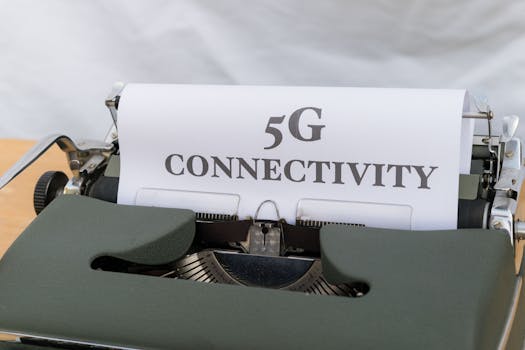
From 5G to AI: The Tech Revolutionizing How We Connect
From 5G to AI, the tech revolutionizing how we connect is rapidly changing the way we live, work, and interact with one another. The latest advancements in 5G networks and artificial intelligence are transforming the world of connectivity, enabling faster, more reliable, and more intelligent connections than ever before.
The rollout of 5G networks is one of the most significant developments in the tech industry in recent years. With its promise of faster data speeds, lower latency, and greater connectivity, 5G is set to revolutionize the way we communicate, access information, and use online services. From enhanced mobile broadband to massive machine-type communications, 5G is enabling a wide range of new use cases and applications that are transforming industries and societies around the world.
Artificial intelligence, on the other hand, is being used to improve the efficiency, security, and personalization of connectivity services. AI-powered networks can analyze vast amounts of data in real-time, enabling them to optimize traffic flow, predict and prevent cyber threats, and provide personalized recommendations and services to users. The integration of AI and 5G is also giving rise to new technologies such as edge computing, which enables data processing and analysis to take place at the edge of the network, reducing latency and improving real-time decision-making.
The Impact of 5G and AI on Connectivity
The impact of 5G and AI on connectivity is being felt across a wide range of industries and applications. In the field of healthcare, for example, 5G and AI are being used to enable remote consultations, monitor patient vital signs, and analyze medical images. In the field of education, 5G and AI are being used to create personalized learning experiences, enable remote learning, and improve student outcomes. And in the field of transportation, 5G and AI are being used to optimize traffic flow, improve road safety, and enable autonomous vehicles.
The benefits of 5G and AI are not limited to these industries alone. They are also being felt in the field of smart cities, where 5G and AI are being used to optimize energy consumption, improve public safety, and enhance the overall quality of life for citizens. And in the field of entertainment, 5G and AI are being used to enable immersive and interactive experiences, such as virtual and augmented reality, and to provide personalized recommendations and services to users.
The Future of Connectivity: Trends and Innovations
So what does the future of connectivity hold? One of the key trends that is expected to shape the future of connectivity is the increasing use of edge computing. Edge computing enables data processing and analysis to take place at the edge of the network, reducing latency and improving real-time decision-making. This is particularly important for applications that require real-time processing, such as autonomous vehicles, smart cities, and industrial automation.
Another trend that is expected to shape the future of connectivity is the increasing use of artificial intelligence and machine learning. AI and ML are being used to improve the efficiency, security, and personalization of connectivity services, and are expected to play an increasingly important role in the development of future connectivity technologies. The integration of AI and 5G is also giving rise to new technologies such as network slicing, which enables multiple independent networks to run on top of a shared physical infrastructure.
Conclusion
In conclusion, the tech revolutionizing how we connect is rapidly changing the way we live, work, and interact with one another. The latest advancements in 5G networks and artificial intelligence are transforming the world of connectivity, enabling faster, more reliable, and more intelligent connections than ever before. As we look to the future, it is clear that 5G and AI will continue to play a major role in shaping the future of connectivity, and will enable a wide range of new use cases and applications that will transform industries and societies around the world.

